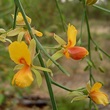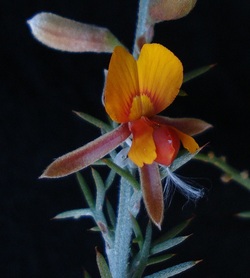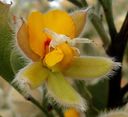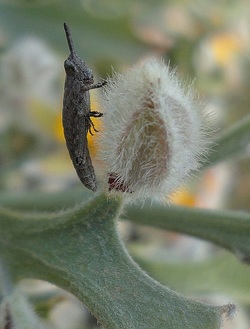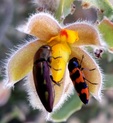The genus Jacksonia has pea flowers that are adapted to dry conditions and are common on poor soils. They are small or straggly plants with water conserving features like thickened and reduced leaves, small flowers and/or hairy surfaces, and have large sepals that open to reveal yellow flowers with red markings. There are 4 species in Foxes Lair
Tall straggly Stinkwood shrubs (Jacksonia sternbergiana) are most common particularly on sands and sandy gravels.
On the really crook white sand in the south-western part of Foxes Lair is the blue-green spiky-leaved Grey Stinkwood (Jacksonia furcellata).
I decided to test whether Stinkwood really does stink and burnt a twig; and sure enough detected a nasty smell………….of burnt eyebrows. Wood from larger stems was much less flammable and emitted black smoke and a mildly acrid odour, but no stink. Same result for grey stinkwood. The myth is busted.
Tiny flowered Jacksonia alata is common on the flats on the north east of the claypit.
Weird and woolly Jacksonia epiphyllum is common on orange stony gravels following the 2009 fire.
As they flower in late spring when most other shrubs have finished, Jacksonias are important for a range of insects that eat nectar (bees/ beetles/ flies) and the flowers (beetles/ grasshoppers/weevils and spiders that hide in the flowers for prey
